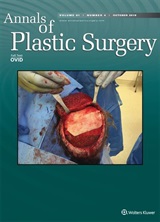Purpose: Children who had internal rotation contracture deformities of the
shoulder secondary to obstetric brachial plexus palsy were studied. The outcomes
of anterior shoulder release and tendon transfer in 1-stage procedure
were analyzed.
Methods: Anterior shoulder release and tendon transfer in 2 separate incisions
as 1 procedure were performed in 76 patients for improvement of shoulder function.
Anterior shoulder release was performed through the deltopectoral incision,
starting with the coracoid process that extended 5 cm caudally. Osteotomy
of the coracoid process was osteotomized subperiosteally and the pectoralis minor
tendon was remained attached to the periosteum. Z-plasty of the subscapularis and
resuturing of the pectoralis minor short head of biceps and coracobrachialis to
their original position were performed in all cases. A separate second incision in the
posterior axillary fold was carried out to perform rerouting of the latissimus dorsi
and teres major tendons with a mean follow-up of 5.6 years (range, 1Y7 years).
Results: The average active external rotation with the arm at the side increased
from j26 + 15 degrees preoperatively to 67 + 17 degrees postoperatively
(average gain, 85 degrees). The average shoulder abduction increased
from 46 + 22 degrees preoperatively to 130 + 32 degrees postoperatively
(average gain, 75 degrees). Mallet score improved from 12.3 to 22.6.
Conclusions: Anterior shoulder release combined with latissimus dorsi and
teres major rerouting significantly improved global shoulder function.
Key Words: internal rotation contracture, latissimus dorsi and teres major
rerouting, obstetric brachial plexus injuries, shoulder deformity
(Ann Plast Surg 2013;71: 510Y518)
Untreated upper plexus lesions (C5 and C6 roots with or without
C7) invariably result in permanent shoulder bone and joint deformities,
because spontaneous recovery favors the internal rotators
and adductors.1Y4 Paresis or paralysis of the external rotators and
abductors of the shoulder allows the internal rotators and adductors
to contract unopposed, which leads to internal rotation contracture.
These patients often demonstrate a ‘‘trumpet sign’’ when attempting
to bring their hand to the mouth. Patients eventually may develop
subluxation or posterior dislocation of the glenohumeral joint with
severe functional impairment.5Y8 In the global type of obstetrical
brachial plexus palsy, the arm is f laccid and in a neutral position, and
thus shoulder deformity is encountered less frequently.9Y11 The
shoulder may also be f laccid and paralytic in cases where the upper
roots are avulsed.12 Consequently, a number of procedures have been
developed attempting to improve shoulder function in these cases.
The first surgical treatments reported in the treatment of Erb palsy
consisted of anterior releases of the muscle and/or tendon such as
those described by Fairbank13 in 1913 and later by Sever14 in 1927.
More recent variants of this procedure include those by Carlioz and
Brahimi,15 Gilbert et al,16 and Pearl,17 the latter using an arthroscopic
approach. Muscle transfers were first described by L’Episcopo18 in
1934 and may be performed with or without simultaneous musculotendinous
lengthenings19Y26 to modify muscle balance in favor of
external rotation and restore function. In this study, we present a retrospective
review of 76 children with obstetrical brachial plexus palsy
who underwent secondary reconstructions for correction of internal
rotation contracture deformity and to improve shoulder stability and
function. To our knowledge, latissimus dorsi and teres major rerouting
with anterior shoulder release was published only recently by Terzis
and Kokkalis.4 We therefore report our experience with 76 children
who were treated by this approach with some modifications


